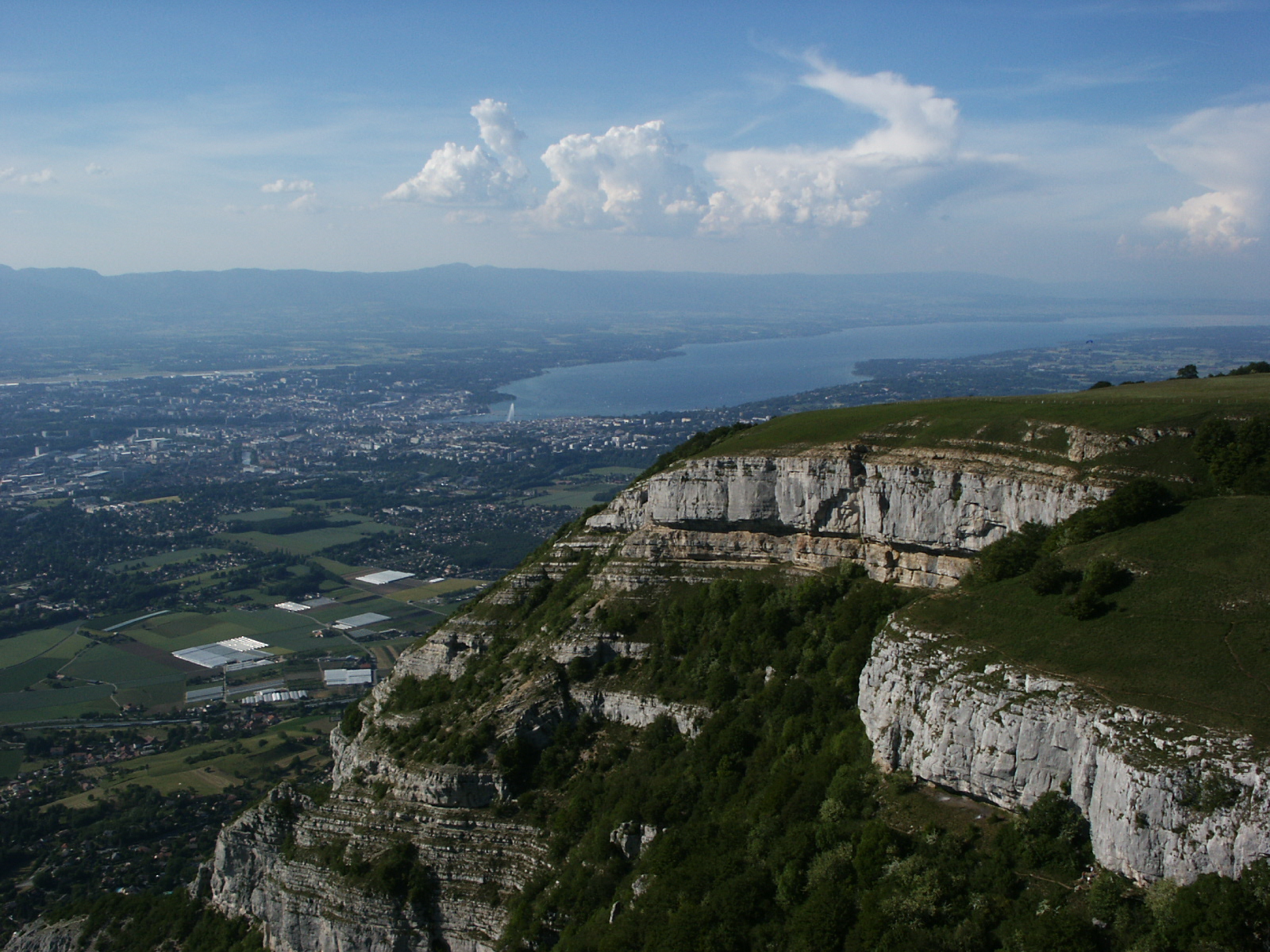Enchanted Swiss waters
Lakes are deeply mysterious and provide the setting for an array of ancient tales. Lakes are steeped in myth, symbolising unknown realms. They are said to have purifying or life-giving powers.
Once upon a time there was a country with an abundance of mountains and lakes. The many lakes were so magnificent that they fascinated and shaped the imaginations of young and old alike down the generations. Popular legends and bygone tales explain the origin of the lakes, recounting how they arose and acquired their shape.

Three tears form three lakes
One of the best known legends is the story of the Celtic giant, Gargantua. On his way to Italy, Gargantua needed to slake his thirst, but could not drink from the Rhône, as it was too narrow, so he started to dig with his hands. The resulting mound of earth on the left bank of the river formed Mount Salève, so named because the villagers at the scene cried out "ça lève!" (it's rising up out of the earth!) "The deep hole, of course, became Lake Geneva," explains Denis Kormann, the author of a series of fables published by Helvetiq. Before leaving, in a fit of rage, Gargantua threw two large stones in the direction of Geneva harbour which formed the Pierres du Niton (Neptune's stones) – two unusual rocks that can still be seen today.

© Benoit Kornmann
According to another legend the beauty and prosperity of the Geneva region is down to three angels passing through. "Once they had finished their work and surveyed the landscape, they each shed a tear which fell to earth and became Lake Geneva, Lake Bourget and Lake Annecy respectively," says Christine Pompéï, the author of Swiss tales published by Auzou Suisse.
At the mouth of the Rhône "it is said that a nymph named Brume lies in wait for young men," adds Denis Kormann, "who, lured by her beauty, follow her into the mist, never to return." Legends tell stories about real places. The legend of Brume is a morality tale depicting a rite of passage. "In Switzerland, morality tales and rites of passage are closely intertwined," he says. "The Swiss feel very close to the land and to nature, so there is a renewed interest in these stories."
Wyverns and dragons
Fathomless lakes have the power to fascinate and several tales allude to monsters in their depths. The giant fish in Lake Geneva, described by Gregory of Tours as early as the 6th century "are, in fact, gigantic catfish," explains Christine Pompéï. Other stories tell of wyverns, fabulous dragons or winged serpents, which feature in tales from the12th century onwards.
The Lac Noir in the canton of Fribourg is said to be home to a dragon that emerged from deep inside the mountains to punish a man who viciously killed animals without a second thought. It began to rain heavily and the puddle quickly became a lake as black as the dragon's anger. According to a legend from the canton of Vaud, the bright colours of summer skies are the work of the Muveran dragon. "At the end of the summer the dragon is exhausted and returns to the Lac de Bretaye or Lac de Chavonnes to rest. In the spring, the dragon melts the ice when he wakes up," says Pompéï.

There is also a legend featuring the Lac de Chavonnes and the Lady Isabeau. When shepherds warned that the canton of Valais would be invaded, Lady Isabeau took refuge in the forest of Chavonnes, hiding her precious jewels at the bottom of the lake. The sparkling reflections on the lake are the jewels glinting. "Lady Isabeau was adopted by the spirits of the forest who turned her into a fairy, rendering her immortal," recounts Pompéï. "She continues to guard her treasure to this day. Anyone who tries to steal it will be confronted by a white monster." Lakes also attract fairies. Fairies escaping the destruction of the valley by woodcutters are said to have gathered at the bottom of the Lac de Joux, causing it to sparkle. Christine Pompéï believes that these stories are best told "in the evening because they stimulate children's imagination, offer new ways of seeing our landscape, and open doors to a world of wonder".
Translation of article by Chams Iaz, published in Le Temps, July 2019.




